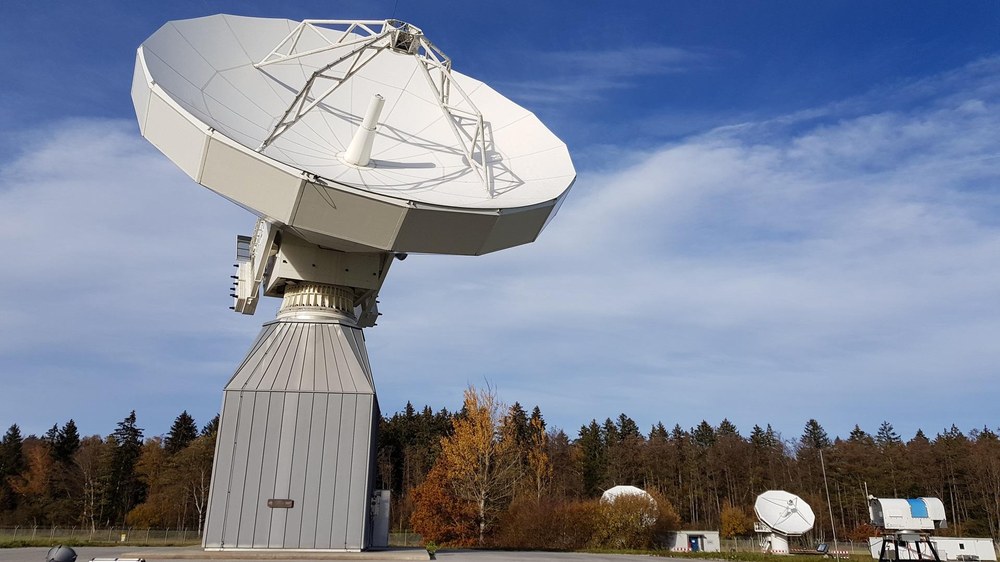Ka-band antenna

The German Aerospace Center (Deutsches Zentrum für Luft- und Raumfahrt; DLR) Ka-band measurement system is specifically designed to support the launch and early orbit phase (LEOP) of satellites in low Earth orbit. To achieve this goal, the antenna can be moved at high angular velocities of up to 15 degrees per second, while maintaining a pointing precision of 0.001 degrees. The antenna has a Cassegrain reflector system for a frequency range of 18–31 gigahertz. To function optimally at these frequencies, the surface of the 13-metre main reflector must be so finely crafted that its average surface roughness is less than 0.112 millimetres.
The antenna has a transmitting and receiving branch. To determine a satellite's position, its angle, speed and distance can be measured precisely.
In addition to the transmitting and receiving branch for commands and telemetry, the Ka-band antenna has additional equipment to measure the characteristics of a satellite in orbit (IOT). In addition to the mechanical precision of the antenna, the radio frequency components – especially the transmit amplifiers – are designed at the limits of what is currently technically possible.
